A Basic Guide to ICM Photography
- WildWillowWays

- Feb 11, 2024
- 9 min read
Updated: Mar 1, 2024
Intention Camera Movement (ICM), while not a new concept in photography, has grown in popularity over the last few years.
Most photographers who are dedicated to standard photography have at least given ICM a try, many finding it to be a path to expressing their creativity in a more unique way.
Photography doesn’t have to be about representing reality. The term photography means ‘drawing with light’, and this definition is particularly relevant to ICM photography.
ICM photography throws out the rule book, sets creativity centre stage and gives us new and intriguing ways to produce unique impressionistic or abstract images.
If you would like to boost your creativity and experiment with ICM photography this basic guide will get you started.
A Basic Guide to ICM Photography
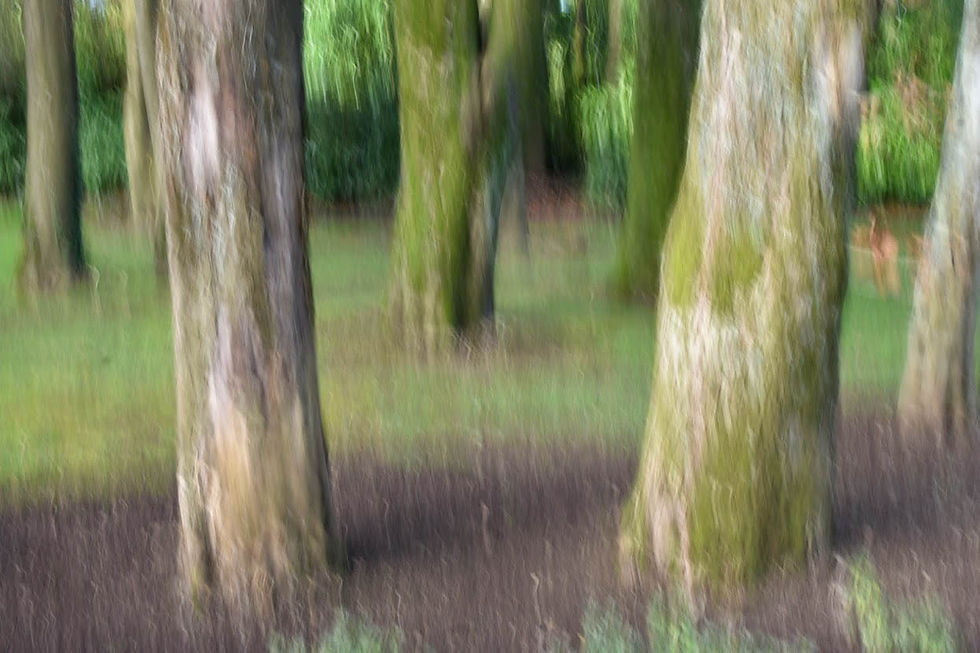
INTRODUCTION
If you are tired of taking the same type of photographs again and again, if you would like to take a different approach to your photography or learn some new creative techniques, then you might be ready to try some ICM photography.
With ICM there are no rules. It’s all about experimentation, getting creative with your camera and embracing the beauty of what you can create by intentionally blurring your images.
But ICM is not simply about standing in front of a scene and moving your camera randomly. You can do that, but it might not result in anything worthwhile. However, with some thought about what subjects to capture, experimentation with different exposure times and a little bit of intentional movement, you can create truly unique and beautiful images that will leave your viewers in awe.
If you think you might be interested in trying ICM photography, this basic guide will help to get you started.
The creativity is up to you!
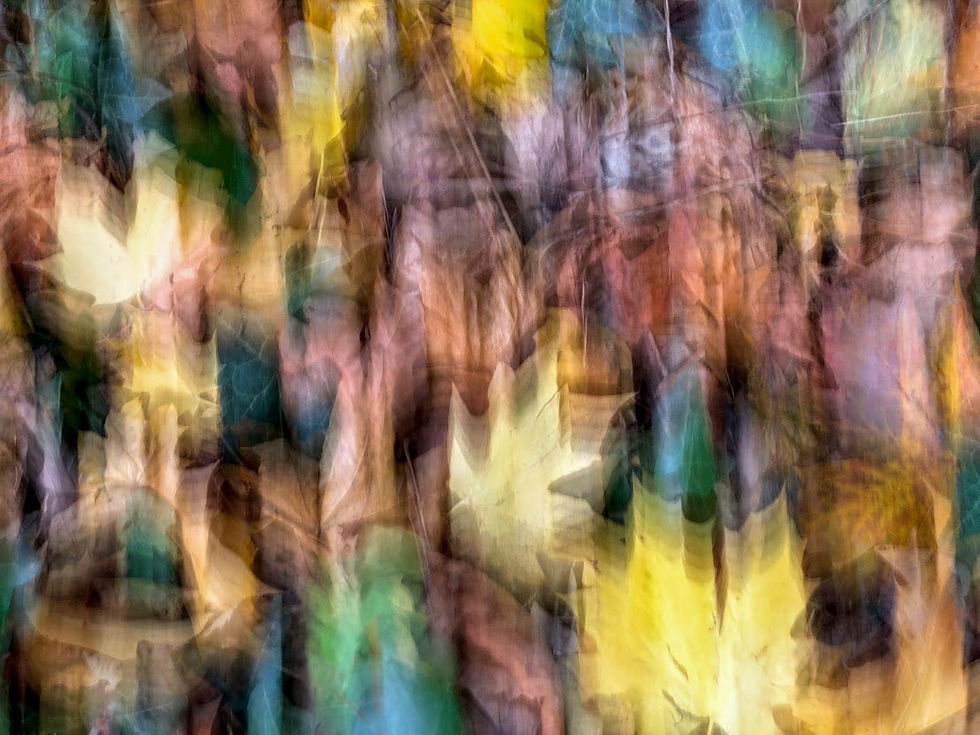
What is ICM photography?
Put simply, intentional camera movement (ICM) photography is exactly what it says it is – intentionally moving the camera during exposure to create a unique, artistic effect. All it takes is some experimentation with different shutter speeds and a variety of camera movements and you can watch the magic unfold in front of your eyes.

Why do ICM photography?
Aside from being a fun technique to use in photography, ICM is also beneficial in various scenarios when you don’t want a straight-forward, conventional image and would prefer to convey the essence of your subject through emphasising shapes, lines, colour, tones, or texture.
In ICM photography the image can be totally abstract, or it can be impressionist, in which the subject is recognisable to some extent. This can often result in a painterly style image.
Different approaches will work in different situations, and all approaches are valid.
Without having to abide by the guidelines of conventional photography, ICM opens up a world of discovery and creative possibilities which can take your photography in a new and exciting direction.
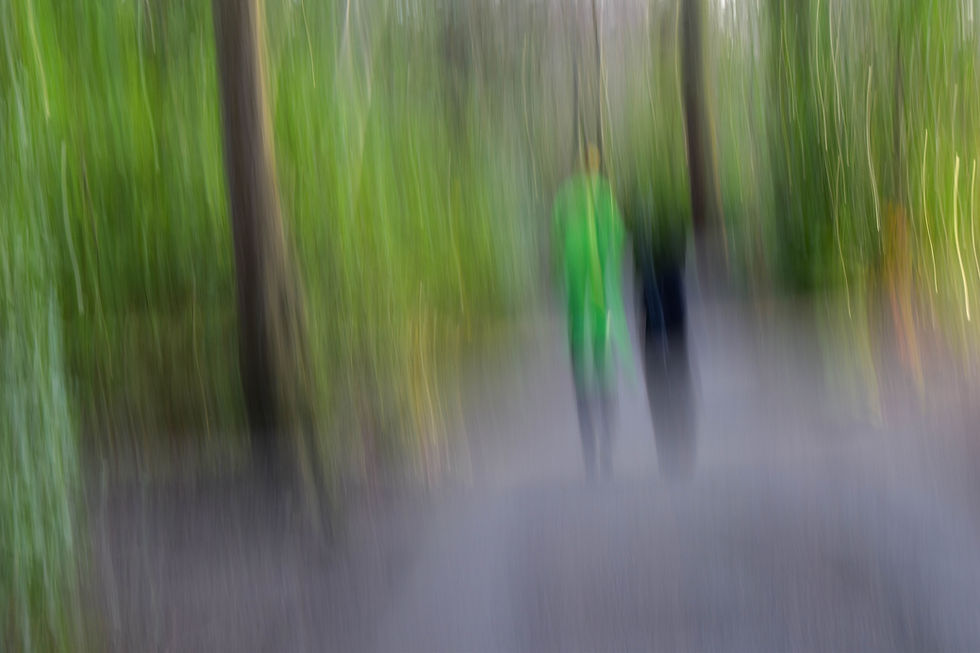
How do you get started with ICM?
Getting started with ICM is simplicity itself. All you need is a camera, a lens, and a smattering of imagination!
· Camera: Any type of camera on which you can manually adjust the shutter speed will work for ICM. It doesn’t have to be an expensive camera, a basic DSLR or mirrorless camera will work equally well. You can even do ICM using your phone if you can adjust shutter speed either on the phone’s native camera app or on a third-party app.
· Lens: A lens is the second essential for ICM photography. The type of lens is not important, either a prime lens or a zoom lens will work. However, it is good to experiment with different focal lengths and to try some zooming movements, so a zoom lens will be required for this.
While you can effectively use any lens for ICM photography, a wide-angle lens is often considered to be optimal as the wider your focal length the more pronounced the effect will be. A kit lens also works well, while a longer lens can be used to create a stronger blur effect.
As you progress you may want to add a neutral density (ND) filter or polarising filter to cut down on light and allow for a longer exposure, especially if you want to do ICM in bright conditions, or a tripod to help you capture a straight horizon, but neither of these are essential to begin with.
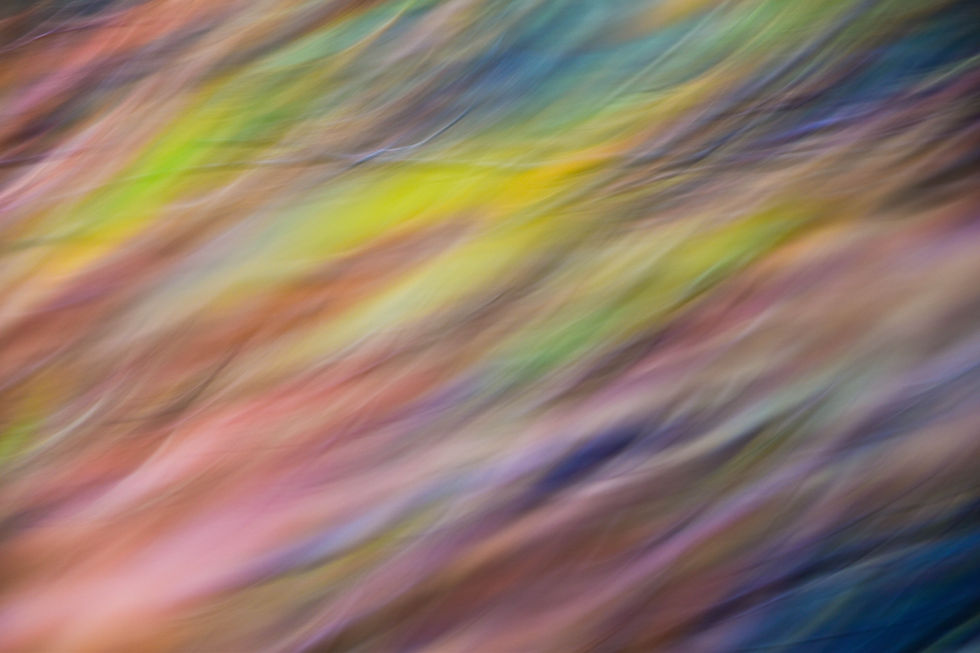
What are the best camera settings for ICM?
Shutter speed
Since intentional camera movement is all about controlling the shutter speed, shutter priority mode is a good place to start. Once in shutter priority mode it’s all about experimenting with different shutter speeds to see what effect you like. A longer shutter speed will give you a more abstract, stronger blur effect whereas you can create a lesser, but often more creative, blur effect with a shorter shutter speed.
Most exponents of ICM photography suggest a shutter speed of between 1/20 second and 2 seconds but you can experiment for yourself to see which effect you prefer. Personally, I tend to use 1/2, 1/4, 1/5, or 1/6 second but I also experiment with other shutter speeds. Half a second shutter speed is a good place to start.
The rate at which you pan will also affect the resulting image. For example, if you use half a second shutter speed and pan slowly you will achieve a different result than if you pan more quickly using the same shutter speed.
Aperture
If you are using shutter priority mode, the aperture will be taken care of but as you progress in ICM photography you might want to use full manual mode which gives you greater control over shutter speed and aperture. A small aperture such as F16 or F22 will allow you to achieve a longer exposure time.
ISO
An ISO of 100 is generally a good ISO as it allows you to extend the shutter speed and reduce noise.
Additional tips
Setting your camera to manual focus keeps your camera from hunting for focus.
If your lens has image stabilization you should deactivate it otherwise it will try to compensate for motion, which will defeat your purpose.

What are the best subjects/locations for ICM?
The answer to this is as personal as it is in any type of photography.
When I began experimenting with ICM I chose random subjects that I wouldn’t normally be drawn towards, and the results weren’t very good. I have since realised that I need to choose my subjects in the same way that I would for any other type of photography. I need to choose subjects that I like, subjects that draw my eye. This can be due to good contrast, vibrant colour, strong shape or interesting texture. Having said that, there are also times when I see something that I wouldn't choose as a subject for standard photography yet I believe it has potential for ICM. As in all types of photography, ICM images will look better if their subjects are deliberately chosen and have a definite point of interest.
Some locations that will yield good subjects for ICM are woodlands, coastal areas or cities and towns. Woodlands or forests are good places to start as trees provide strong lines and there is often good contrasting shape, tone and colour in the woodland foliage. These elements can be used to give an impression of the forest. The way in which you capture the tones and textures of the forest can help you create an impression of either a dark, moody place populated by shady figures, or a light, breezy space where fairies dance.
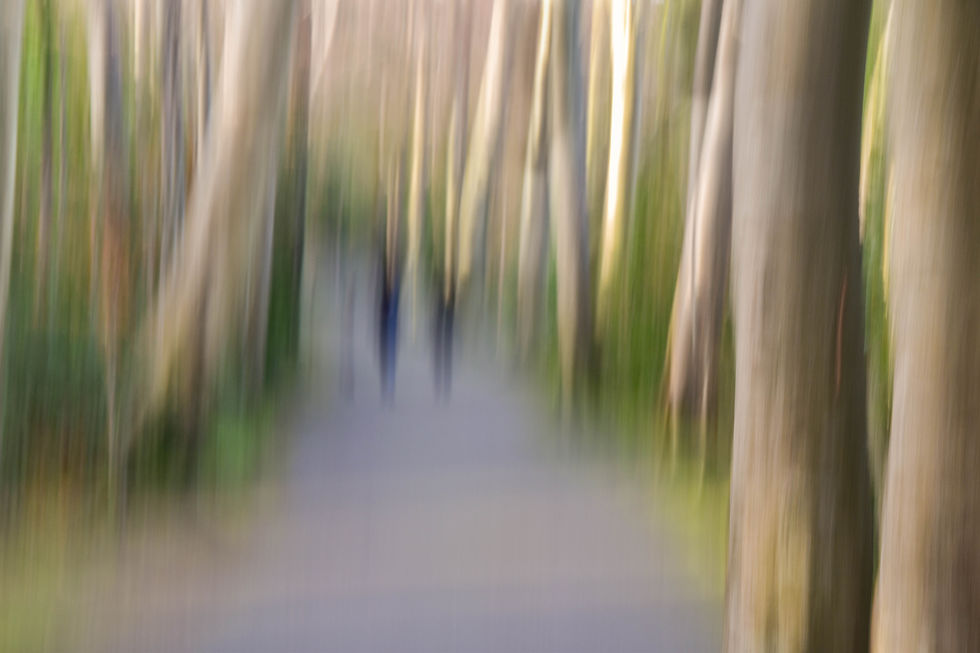
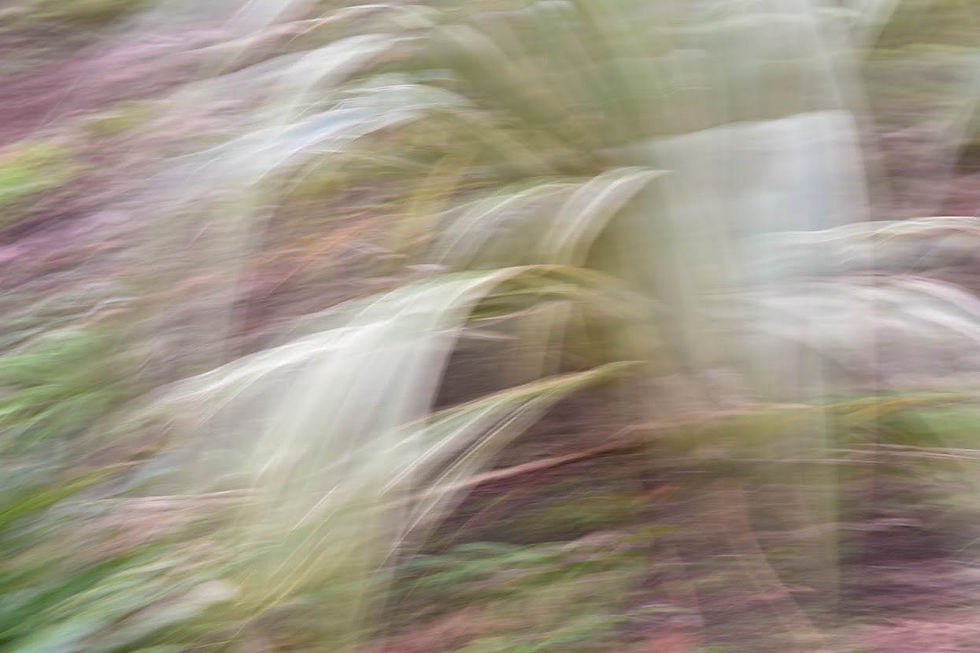
Wherever and whatever you choose to photograph, you are in control of how you want the final image to appear.
What type of movements do you use in ICM photography?
As its name suggests, movement is at the heart of ICM photography. The great thing is, you can use all types of camera movement, with each one yielding a different result.
Here are some possibilities:
Vertical panning: This up and down movement is good for vertically shaped subjects such as trees or buildings.
Horizontal panning: This sideways movement is often used for coastal scenes or to capture sunrises or sunsets. It is used to emphasise colour or texture or for creating a sense of movement.
Zooming: Using your zoom lens to zoom in or out creates a spiral or swirl effect. You can vary the direction in which you zoom or the speed of zoom to create various results. Zooming can be a good approach for photographing flowers or the tops of trees, among other things.
Rotating: Rotating the camera on its axis is another method used to produce spirals and swirls. Experimenting with the speed and direction of movements gives different results.
Tilting: A tilting movement of the camera, sideways or up and down, produces interesting diagonal lines and unique shapes.
Square movement: A square or box movement is often used when doing ICM photography related to architecture, especially if you want to have a blurry outline of a structure rather than a completely abstract image.
These are just a few of the infinite possibilities for camera movements in ICM but they provide a starting point.

Do ICM images need to be in colour?
While colour is one of the variables that adds interest to ICM photography, monochrome ICM images have a uniqueness all their own. Black and white can add drama, emotion, and a sense of mystery to ICM images. Sometimes, when the colour is stripped away, you are left with shape, pattern and the flow of movement which makes each monochrome image unique.
As well as eliminating colour to create a certain effect in ICM photography, we can also choose to use a limited colour palette.
Each choice we make creates its own mood and emotion.
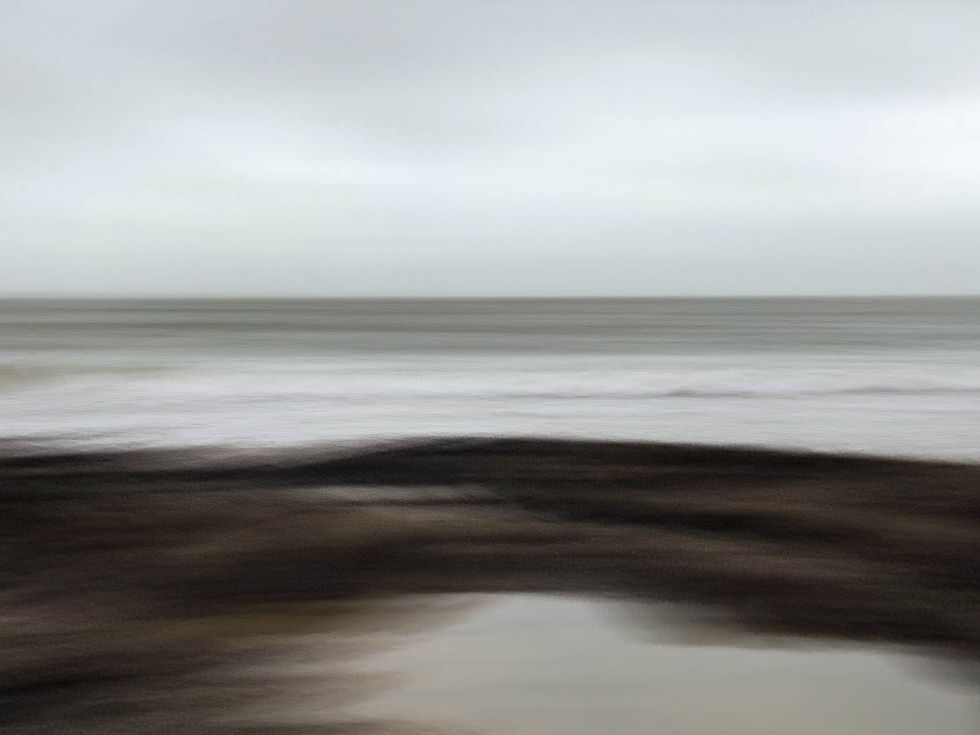
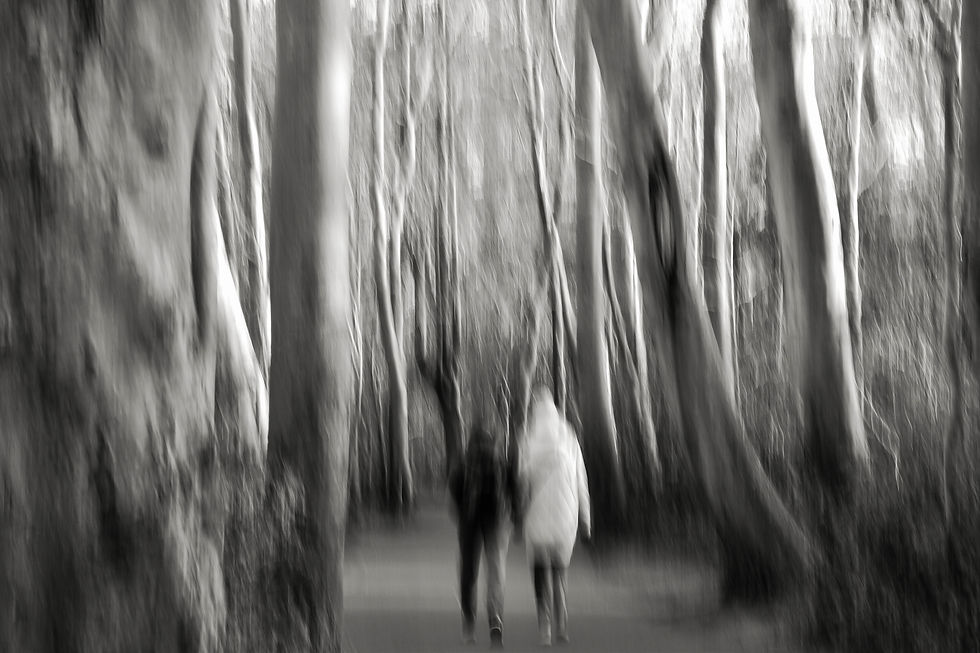
What should you avoid in ICM photography?
A huge part of the enjoyment of ICM photography comes from experimenting with different techniques, movements, and shutter speeds, and it is through this experimentation that we learn about ICM, about the type of images we like to create and about how to create them.
While there are many ‘failures’ in ICM photography, these can be chalked up to experience and used as learning opportunities.
One way of shooting that I have learned to avoid is including too much sky in an image, particularly in a woodland image, where the bright areas of sky produce unattractive streaks of white. A way to avoid this is to start panning from the bottom of the tree and to stop before you reach where the sky meets the trees.
By trial and error in ICM you will soon learn what works and what doesn’t work.

Is post-processing necessary in ICM photography?
As with all types of photography, how much or how little post-processing you do entirely depends on what you want to achieve.
For some ICM photographers, the image straight out of camera produces the effect they desire, and post-processing is not necessary. For others, who want to adjust saturation, contrast or colour, or who want to create a more artistic look, some post-processing will be required.
The final decision regarding post-processing is up to each individual.
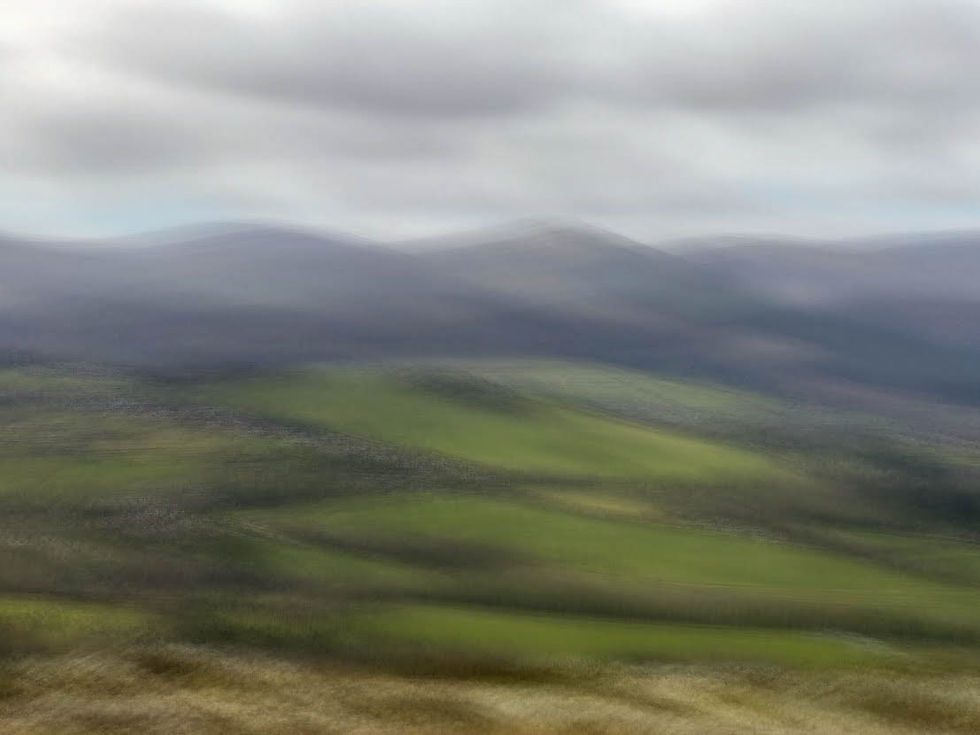
Tips for more successful ICM photography
Below are a few tips I have picked up which have helped me become more successful at ICM. I hope they will help you too.
1. Take lots of shots. Because ICM photography is essentially about trial and error you need to take a lot of images to get one or two that you like. You will be adjusting shutter speed and direction, adapting to the light, finding the right movement to suit the scene, and as you get started in ICM this will necessitate taking in the region of 20 – 40 images. Out of those you may have just one or two that you are happy with. The good news is that as you progress at ICM you get more used to the types of movements and shutter speeds that appeal to you and you will soon take fewer images to get what you like.
2. Start your movement before pressing the shutter. When you are starting ICM photography it can be tricky to get the hang of pressing the shutter while moving so many photographers start to move before pressing the shutter, then press the shutter and continue moving.
3. ‘Chimp’ but don’t delete! ICM is one type of photography where you are encouraged to look at your image after you have taken it, also known as chimping. This is because ICM is largely trial and error and looking at your image immediately gives you an opportunity to make changes if required. However, it’s also important not to delete images until you get a chance to view them properly on a big screen. You might be surprised when that image you nearly rejected turns out to be one of your favourites.
4. Try ICM in many locations. Good ICM images can be achieved in all kinds of locations. Forests, fields of flowers, streets, coastal areas, even hedgerows or country lanes will yield great images so don’t confine yourself to one or two locations. Experiment with different locations as well as with settings and movements and watch your ICM photography progress.
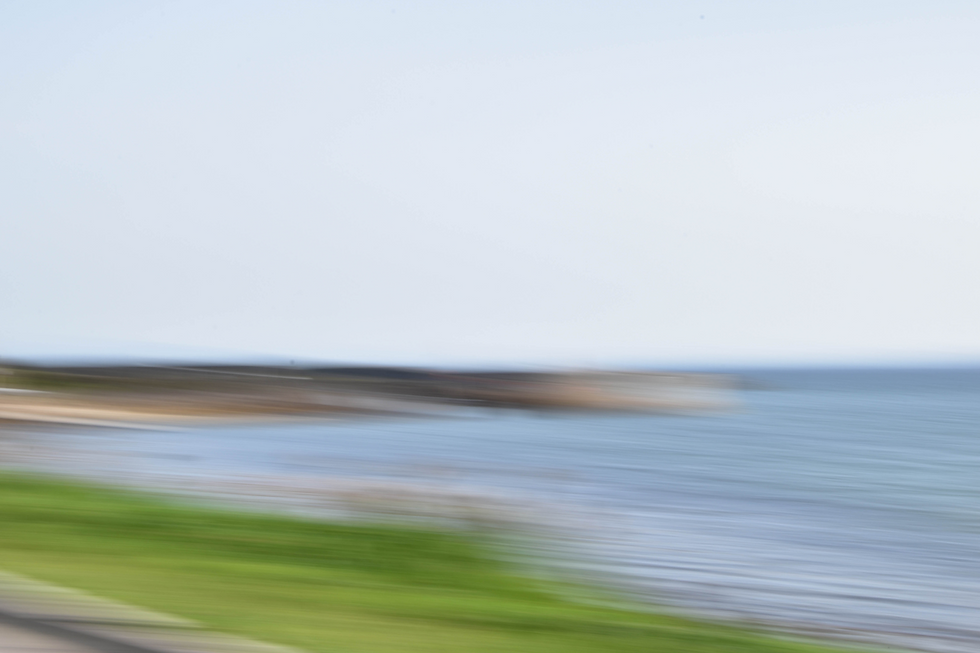
CONCLUSION
Intentional Camera Movement is a photography technique that moves our photography away from reality and allows us to create more artistic looking images.
There are many reasons to give ICM photography a try:
· ICM encourages exploration, imagination, and creativity.
· It helps us to step outside our comfort zone and learn new techniques.
· It can be practised in all locations, all seasons and all weathers.
· There are no rules with ICM, the results are unique to each photographer.
Intentional Camera Movement is a creative way of doing photography in which we can give our imagination free rein and in which the only barriers to what we produce are the limits of that imagination.

You can download and print a copy of this guide using the link below.
file:///C:/Users/maryc/OneDrive/A%20basic%20guide%20to%20ICM%20photography.pdf






Looking for the right professional to transform your home? Choosing the best interior designers can be a game-changer! Our platform features a diverse range of talented and experienced designers with stunning portfolios, helping you find a perfect match for your style and budget.
Struggling to find the perfect style for your new apartment or villa in Bangalore? Our platform simplifies the process by showcasing a curated list of top-rated interior designers in Bangalore. You can browse through their impressive portfolios, read client testimonials, and connect with a professional who understands your vision and budget.
ICM photography really opens up a fresh way to be creative by “drawing with light” instead of just capturing reality. When I needed a break from my usual routine, I tried the plinko app, which offers special bonuses for players in Malaysia. I started off cautiously, lost a bit at first, but then raised my bets and won a nice prize. It was a fun and relaxing way to shift my focus, just like experimenting with new photography styles can refresh your creativity.
Γειά σας! Στην Αργολίδα, καθισμένος κοντά στο Μυκήνες δεχόμουν προτάσεις για παιχνίδια τύχης από μια παρέα του προγράμματος ξενάγησης. Μπήκα στο plinko game και με κέρδισε η απλότητα που συνδυάζει τύχη και στρατηγική στοιχημάτων. Έχασα μερικές φορές, αλλά κράτησα ψύχραιμη προσέγγιση. Στην τελευταία βολή ήρθε το “μπαμ” — κέρδισα ένα ποσό που όχι μόνο έσβησε τις απώλειες, αλλά με έκανε να νιώσω χαρούμενος. Έπειτα φωτογραφήθηκα με τα αρχαία.
Hoi allemaal! Terwijl ik door een Facebook-groep voor reisfanaten in Vlaanderen scrolde, kwam ik een tip tegen over betonred, waar men enthousiast sprak over hun blackjacktafels. Aanvankelijk had ik weinig geluk bij live-dealers op andere platformen, maar hier verliep alles vlekkeloos: de interface is helder, de kaarten werden eerlijk gedeeld en de winstuitbetalingen kwamen snel. Na een paar spelrondes won ik genoeg om mijn treinrit van Antwerpen naar Gent te bekostigen. Het was een leuke verrassing om zo’n solide ervaring te hebben met een Belgische aanbieder die inspeelt op zowel casual spelers als high rollers.